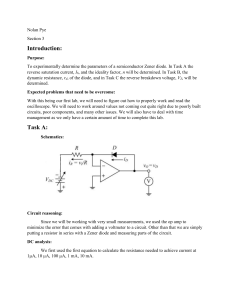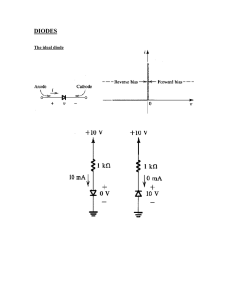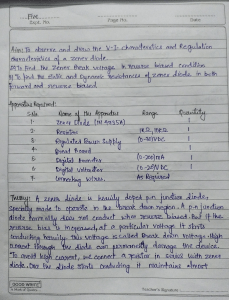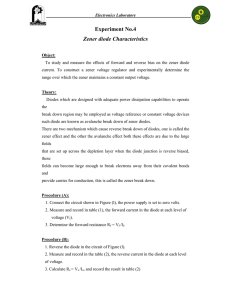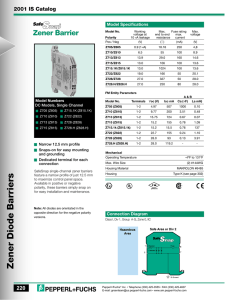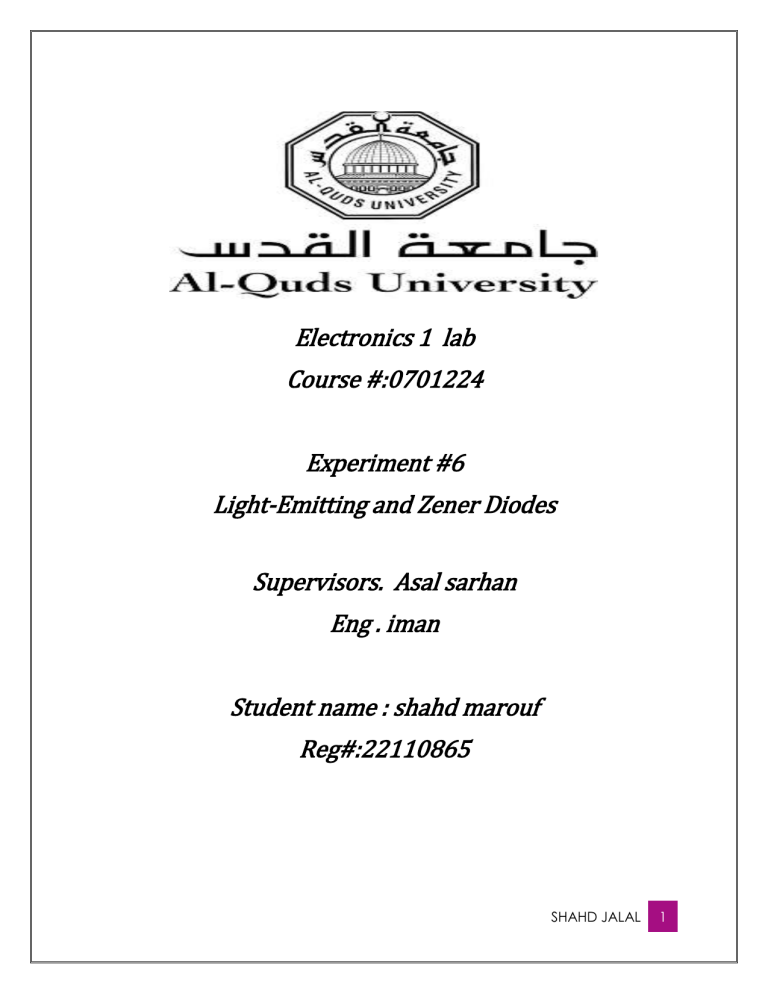
Electronics 1 lab Course #:0701224 Experiment #6 Light-Emitting and Zener Diodes Supervisors. Asal sarhan Eng . iman Student name : shahd marouf Reg#:22110865 SHAHD JALAL 1 Introduction A light-emitting diode (LED) is a semiconductor light source that emits light when current flows through it. The electrons in a semiconductor combine with the electron holes, releasing energy in the form of photons. A Zener diode is a special type of diode designed to allow current to flow reliably "backward" when a certain reverse voltage is reached, known as a zener voltage. The difference between LED and Zener diode is that the LED is simply the LED that gives off light when it is forward biased at around 1.2 to 3.6 volts. The Zener diode can be operated at whatever voltage it is made for (and does not give off any light). SHAHD JALAL 2 Objectives 1- Investigate the characteristics of light emitting diodes (LEDs) and some of their applications. 2- Investigate the characteristics of Zener diodes and calculate their voltage regulation. Equipment -Fixed Resistors -Diodes (Si) -Zener diode (9.1 v) -Power supply -LED SHAHD JALAL 3 Theoretical Background -The light-emitting diode (LED) is a diode that will give off visible light when threshold voltage is given. In LED material gallium arsenide phosphide (GaAsP) or gallium phosphide(GaP) used to create light, which is called electroluminescence. For every LED there is a distinct forward voltage and current that will give bright, clear light. -The Zener diode is a p-n junction device designed to take full advantage of the Zener breakdown region. Once the reverse-bias potential reaches the Zener region, the ideal Zener diode is assumed to have fixed terminal voltage and zero internal resistance. All practical diodes some internal resistance which is limited to 5 to 20 Ω. The experimental procedure will show the variation in terminal voltage for different loads and currents. The following procedures are used to determine the state of Zener diode. For most configurations, the state of Zener can be determined by replacing it with an open circuit. SHAHD JALAL 4 If the open-circuit voltage equal or exceeds Zener potential, Zener diode is “on” and Zener diode can replace with a DC power supply. SHAHD JALAL 5 Procedure Part 1.1. LED Characteristics: - Build the shown circuit: E (V) VD (V) VR (V) 0 1 2 3 4 5 0.001 1.06 1.86 2.1 2.24 2.44 0 0 0.1 0.86 1.8 2.6 Part 1.2. LED Characteristics: - Build the shown circuit: - Do you expect the LED to burn brightly? Why? NO the LED will not light up because the circuit is open and the current is 0. - Reverse the silicon diode of Fig 5 and repeat step 1: When we reverse the silicon diode, the circuit becomes closed and a current passes through it, so there will be voltage on the LED and it will light up. SHAHD JALAL 6 Part 2. Zener Diode Characteristics: - Build the shown circuit: E (V) 0 Vz (V) -0.004 0 VR (V) 1 1 0 3 5 3.06 5.03 0 0 6 7 8 9 10 12 6.06 7.1 8.1 8.8 9 9.1 0 0 0 0.15 1.02 SHAHD JALAL 2.8 7 Part 3. Zener Diode Regulation: - Build the shown circuit: V - V - I - I - I - L(measured) =7.6V. =7.6v. R(measured) =7.7mA. L(measured) =7.7mA. Z(measured) =0. R(measured) - Calculated results: - VZ=VL=E*RL/R+RL= - VR=E-VL= - IR=VR/R= - IL=VL/RL= - IZ=0A. - Error percentage: SHAHD JALAL 8 Part 4. LED-Zener Diode Combination: - Build the shown circuit: VD= 1.93 V ID= 2.11 mA VZ= 8.9 V Vab=10.8 V SHAHD JALAL 9 conclusion - Zener diodes allow the current to flow in reverse direction with reverse bias configuration provided the breakdown voltage is reached. - The forward voltage current characteristic show straight line relationship if the forward voltage is greater than the turn-on threshold voltage of an LED. - The color of the emission of an LED is independent of its lens color and is solely a function of its chip material. - Intensity of the LED emission is directly proportional to its forward current for current levels far below its maximum swing. SHAHD JALAL 1 0

